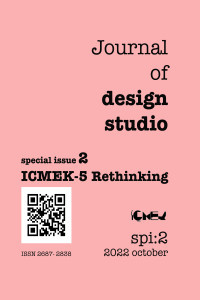Shaping Sustainability in Architectural Education : The Integrated Design as a tool.
Shaping Sustainability in Architectural Education : The Integrated Design as a tool.
Sustainability, integrated design collaborative learning, teaching.,
___
- Altomonte, S., Cadima, P., Yannas, S., Herde, A., Riemer, H., Cangelli, E., … Horvath, S. (2012). Educate ! Sustainable Environmental Design in Architectural Education and Practice. Retrieved from https://www.researchgate.net
- Altomonte, S., Yannas, S., Herde, A., Riemer, A., Cangelli, E., Horvath, S., & LopezDeAsiain, M. (2012). Education For Sustainable Environmental Design. The EDUCATE Project. EDUCATE Press/University of Nottingham.
- Fathi, A. (2007). Integrated Building Design Studio: A Cumulative Methodology to Accommodate and Apply Different Design Approaches in Architectural Education Stage. 3(2), 12. Retrieved from https://www.researchgate.net
- Gulec Ozer, D., & Turan, B. (2015). Ecological Architectural Design Education Practices Via Case Studies. MEGARON / Yıldız Technical University, Faculty of Architecture E-Journal, 10. https://doi.org/10.5505/megaron.2015.20592
- Hamza, N., & Horne, M. (2007). Educating the designer : An operational model for visualizing low-energy architecture. Building and Environment, 42, 3841‑3847. https://doi.org/10.1016/j.buildenv.2006.11.003 John B. Biggs and Kevin F. Collis. (1982). Evaluating the Quality of Learning. Academic Press.
- Kolb, D. (1984). Experiential Learning : Experience As The Source Of Learning And Development. Journal of Business Ethics (Vol. 1).
- Laberge, Y. (2004). Morin, E., Motta, R. et Ciurana, É.-R. (2003). Éduquer pour l’ère planétaire. La pensée complexe comme méthode d’apprentissage dans l’erreur et l’incertitude humaines. Paris: Balland. Revue des sciences de l’éducation.
- Salama, A. M. (2005). A Process Oriented Design Pedagogy: KFUPM Sophomore Studio. Transactions, 2(2), 16‑31. https://doi.org/10.11120/tran.2005.02020016
- Yayın Aralığı: Yılda 2 Sayı
- Başlangıç: 2019
- Yayıncı: Orhan HACIHASANOĞLU
Teaching Ergonomics in the Online Studio
An Online Basic Design Studio Experience: From Point to Space
Vertical Design Studio in Architectural Education: A Summer Practice on Corner Parcel
Hayriye Yasemin SOYLU, Berrak KARACA ŞALGAMCIOĞLU, Kübra BIYUK ÖKSÜZ
Visual Spaces of Change: Self-reflection on Architecture and Urban Change Through Photography
Shaping Sustainability in Architectural Education : The Integrated Design as a tool.
Khansa DHAOUADİ, Pierre LECLERCQ
#eindakoa (what we have done): A Pedagogical Method of Interior Design Studio Method
